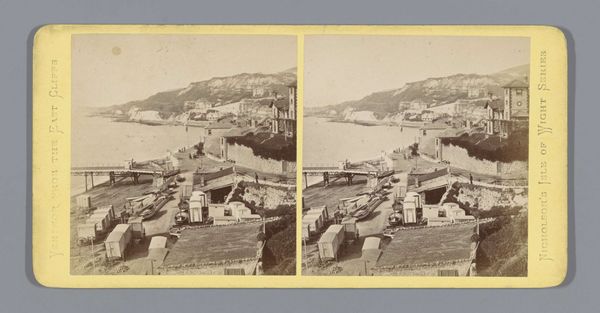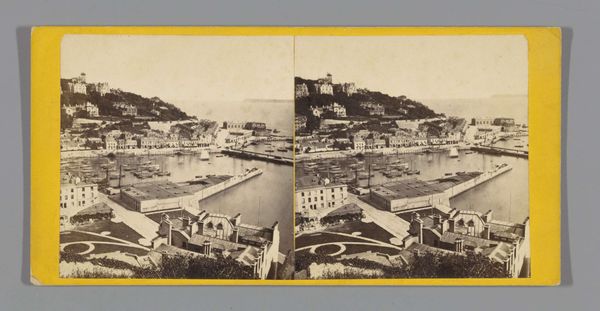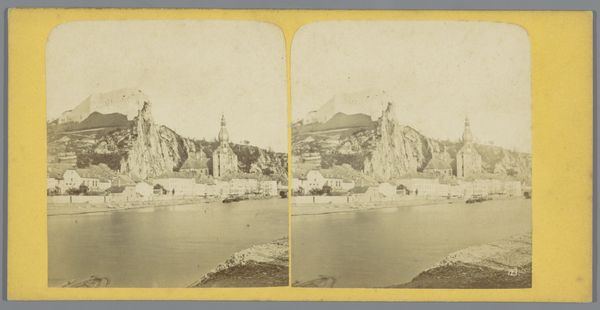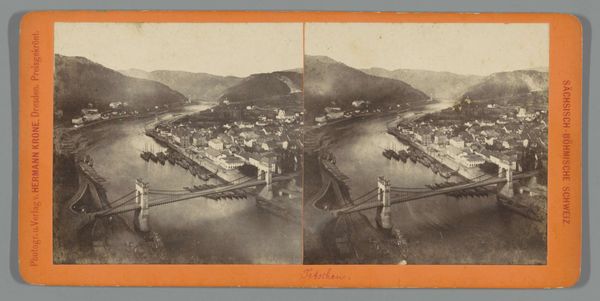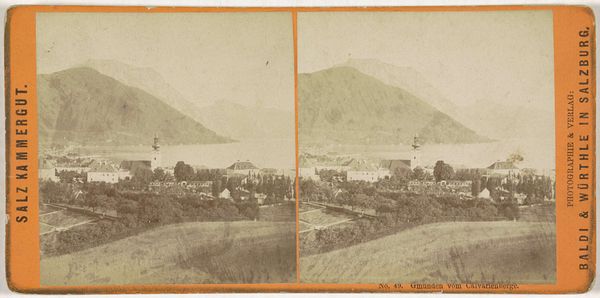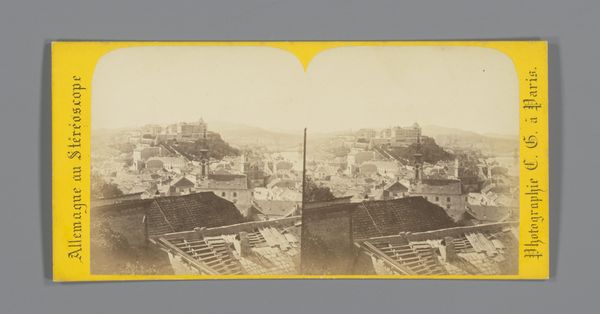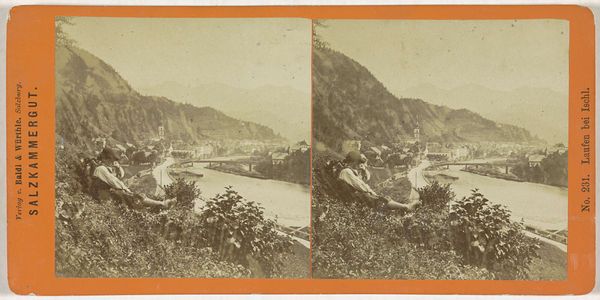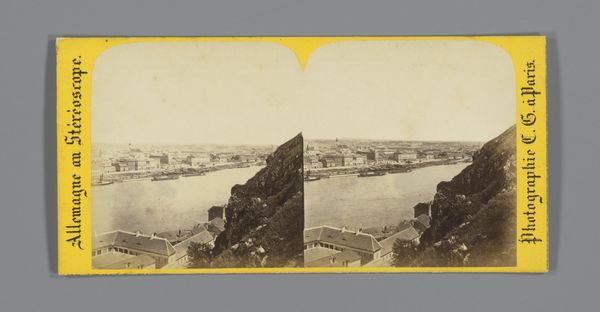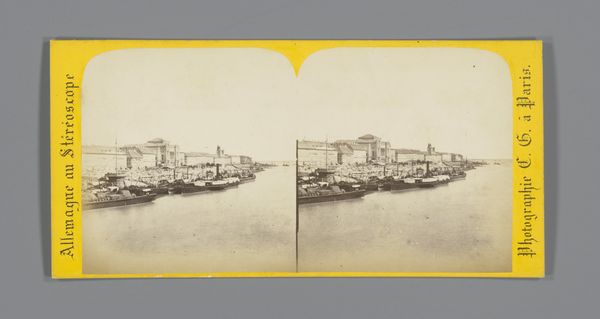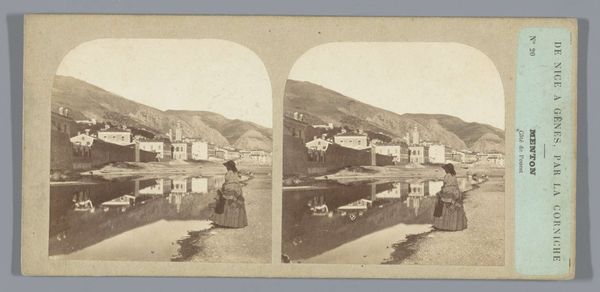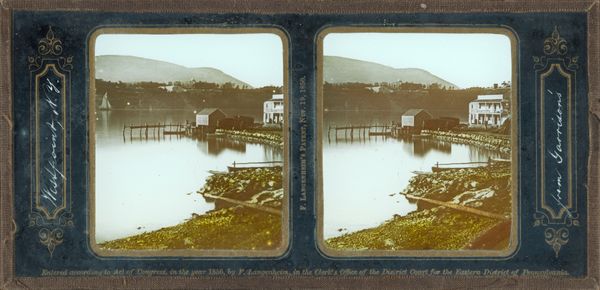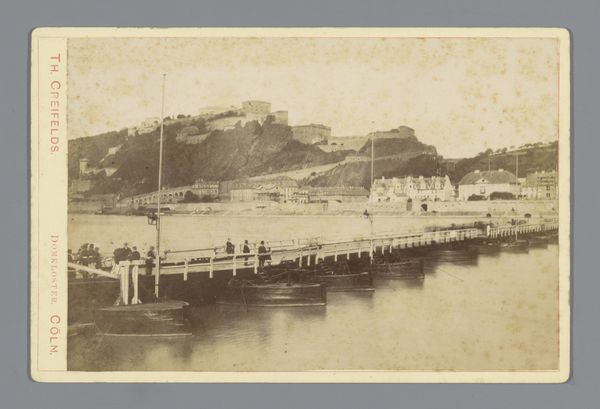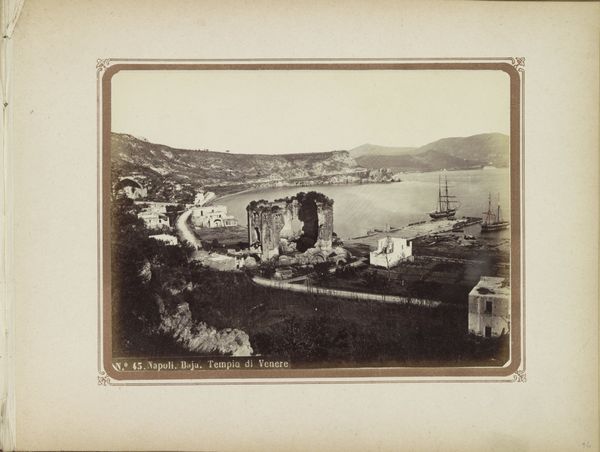
Dimensions: height 84 mm, width 175 mm
Copyright: Rijks Museum: Open Domain
Curator: This stereoscopic albumen print offers a double view of the Danube riverbank in Budapest. Entitled "Gezicht op de kade langs de Donau in Boedapest," it dates back to 1868 and is attributed to Charles Gaudin. Editor: What strikes me is how calm and contained it feels—the tones are muted, almost sepia-toned, creating a really serene atmosphere. The composition itself is very controlled. Curator: Absolutely. Gaudin captured not just the scene, but an entire mood. The way he uses the stereoscopic effect, the slight separation between the images, adds depth—almost as if you could step right into the banks. It makes you wonder about the actual scene, if he saw Budapest this tranquil. Or whether it represents what they aspired to. Editor: That control is formal and impressive, don't you think? See how the strong diagonal of the riverbank moves through the images—almost splitting them into sections and controlling your eye. Then consider the relationship between river and bank, and city: Each mirrors the scale of the next, neatly tying it all together! I feel the way the images are assembled enhances this control in the observer’s perception of space. Curator: I get a sense that this almost romantic vision of landscape helps highlight new transportation opportunities as ships are becoming essential to a region's growth at this period. The people walking leisurely on the bank add an element of timelessness. Editor: Maybe, though I keep seeing a composition designed to convey visual dominance. And that control that I perceive is something new brought on through photography... But that romantic feel you talk about might just be me feeling nostalgic. Curator: That's precisely it. Photography freezes those fleeting moments of everyday life. A lasting snapshot. We often look to what survives in these old snapshots for clues, but as you note, their artistic approach frames not just our own memories, but the intention of a generation as they saw themselves. It also reminds us, though—how different we are as humans as well! Editor: Exactly! A lot of art is often like that: an exercise in historical perception and how we might reframe the same old, "romantic" views through new modes of critical consumption. Thank you.
Comments
No comments
Be the first to comment and join the conversation on the ultimate creative platform.
